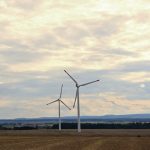What are the barriers to green investment in Peru and how do we address them?

"Despite these efforts, the advance of green investment in the country is still very incipient and represents one of the opportunities with the greatest impact to combat the risks of climate change."
Pia Zevallos
Director of the LACADI Peru Initiative
It is estimated that average per capita income at the national level would be reduced by up to 21% by 2050, compared to a scenario without the effects of climate change, if the trend of global warming continues (Chirinos 2021). Peru is a megadiverse country with ample potential for green investments. At the same time, climate change represents a threat to the country's economic growth, one of the highest in the region.
In order to break this trend, in 2015 the Paris Agreement was adopted at the global level, with the objective of keeping the increase in the global average temperature below 2°C, compared to pre-industrial levels, and to make efforts to limit the increase to 1.5°C. At the national level, measures are also being taken, including the enactment of the Framework Law on Climate Change and its regulations; the declaration of a national climate emergency in 2022; the creation of the High Level Commission on Climate Change; the inclusion of climate change in the National Competitiveness and Productivity Plan; and the coordinated work being carried out by the Ministry of the Environment with the Ministry of Economy and Finance under the Green Protocol.
In spite of these efforts, the progress of the investment green in the country is still very incipient and represents one of the opportunities with the greatest impact to combat the risks of climate change. The LACADI project (Latin American Climate Assets Disclosure Initiative) seeks to create synergies with existing initiatives such as the Responsible Investment Program (PIR) to overcome barriers to climate disclosure and contribute to the alignment of financial flows with national and global mitigation and adaptation objectives.
The investment portfolios of pension funds and insurance companies are equivalent in size to almost 30% of the total assets of the Peruvian financial system. These investors are challenged today to include the opportunities and risks of climate change in order to maintain financial health and face the economic, social and environmental changes associated with the transition to a carbon neutral economy and a resilient society (LACADI, 2022).
However, there are still barriers to the incorporation of climate change as a variable in investment decisions. These include the lack of updated information on climate risks, translated into financial terms, and the slow progress in incorporating socio-environmental aspects and climate risks in corporate decision-making.
The stakes are not low. The transition to investment greens and sustainable development is a powerful opportunity and a crucial step in creating a low-carbon future and stable, lasting economies. Some of the steps identified to meet these goals include: i) Building carbon neutrality commitments at the corporate level; ii) Mobilizing private capital to emerging and developing countries to help them meet their mitigation and adaptation commitments under the Paris framework; iii) Strengthening work on metrics and best practices for portfolio alignment; iv) Defining sectoral action plans towards carbon neutrality; and v) Identifying and certifying low-carbon projects that contribute to adaptation.



